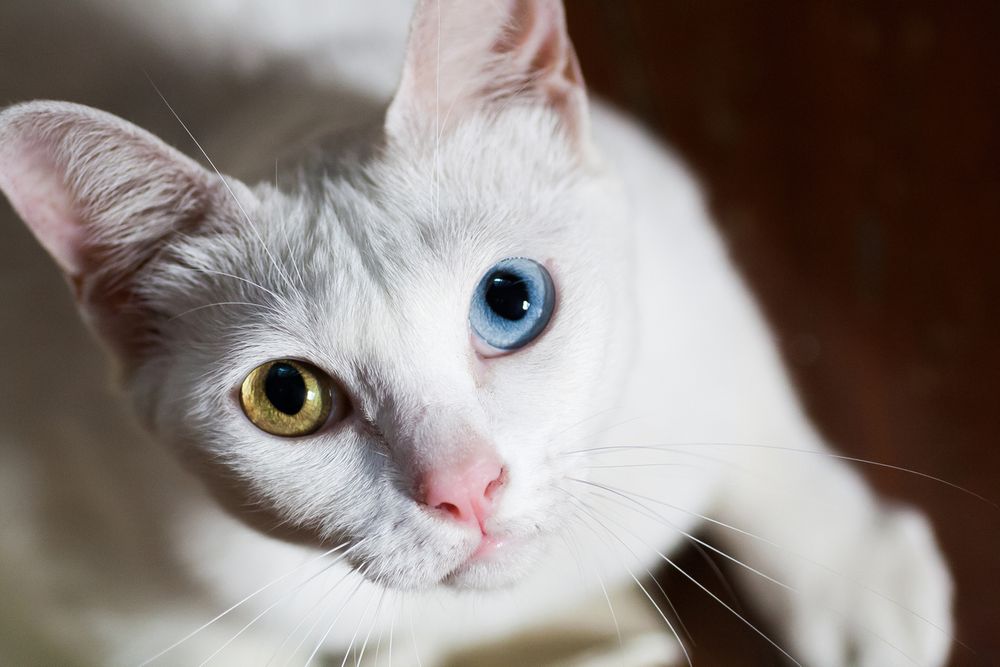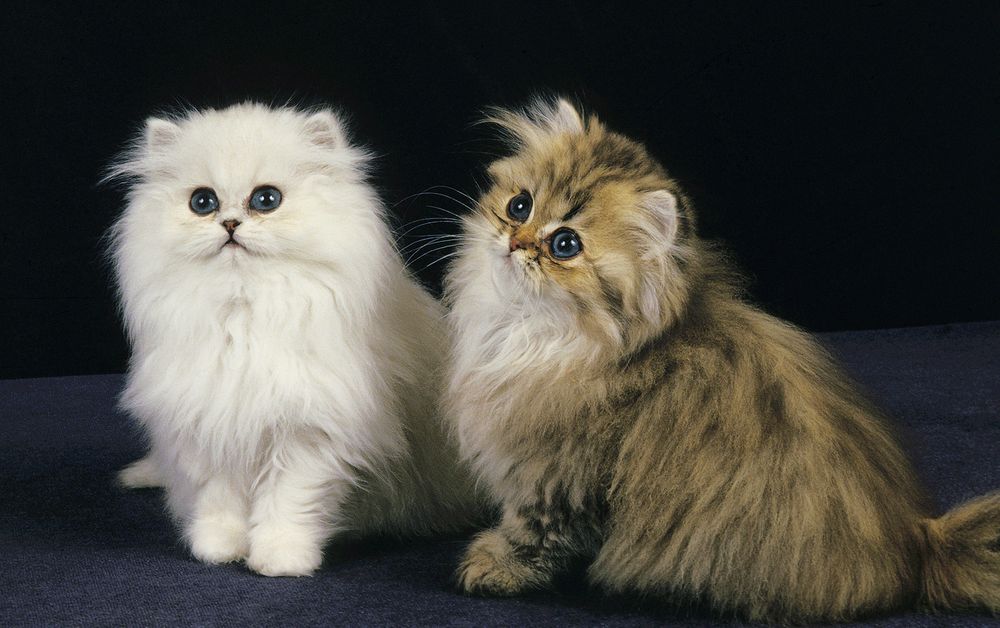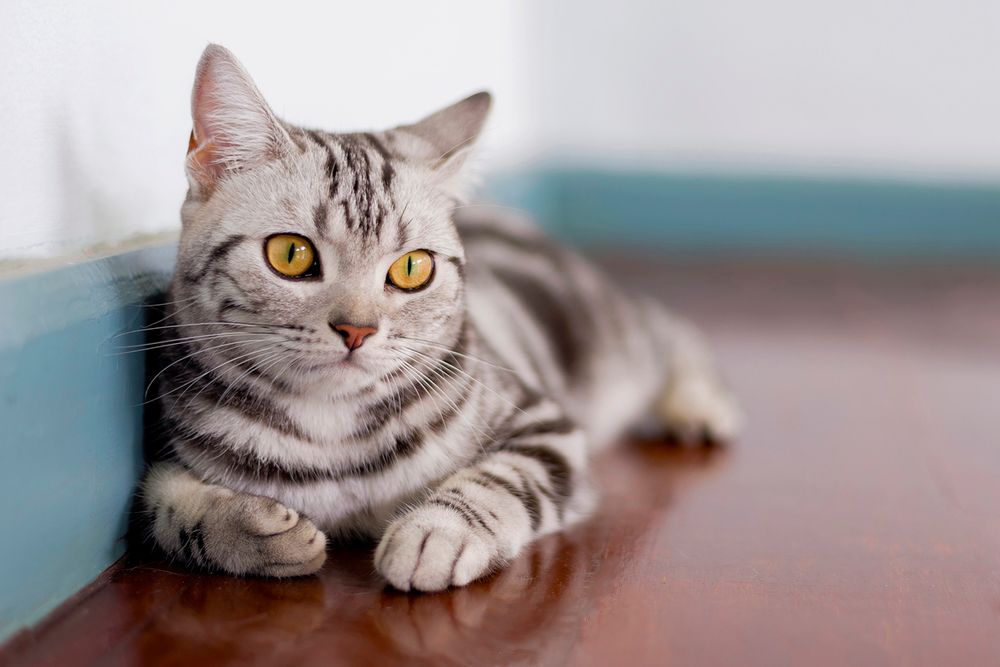Some people spend a fortune on their pets, but the price of the most expensive cat will certainly make your eyes water.
View in gallery
We don’t typically consider cats expensive pets. After all, you can go to the local humane shelter and adopt one for free. But, just like dog breeds, a few particular cat breeds can cost you a few months’ paychecks.
With cats being the second, or sometimes even first, most popular pet in certain countries, it is no wonder that people are splashing their cash to acquire some of the most expensive cats in the world.
What Are The Most Expensive Cat Breeds?
The most expensive cat breed in the world is the Asheera, but why have these felines racked up such a substantial price tag, we’ll find out below.
1. Ashera Cat $22,000 – $125,000

Taking the top spot for the most expensive cat in the domestic cat world is the Ashera. If you’re after one of these exotic housecats, you can expect to pay up to $125,000. Yep, you heard that right, $125,000.
You’re probably wondering why these cats cost as much as they do, and that’s because of how rare they are. A company called Lifestyle Pets bred the Ashera cats in a lab. They mixed an Asian leopard, an African wild cat, and a domestic cat to create the new hybrid Ashera breed.
Only 100 Ashera’s have been purchased since 2006, making them extremely rare and difficult to get your hands on. These cats are relatively tall with large pointed ears, spotted and striped coats, and weigh around 30 lbs.
In total, there are four types of Ashera. These include:
- Common Ashera – The Common Ashera is usually tawny or cream-colored with distinctive brown spots. These cats look like they should be out in the wild, which accounts for their hefty price tag.
- Hypoallergenic Ashera – The Hypoallergenic Ashera took fancy cat breeds to a new level. This type of Ashera is missing a protein, “Fel d1, ” which produces allergies in people. As a result, they look incredibly similar to the regular Ashera but won’t make your eyes and nose itchy.
- Royal Ashera – The rarest and most expensive type of Ashera cat is the Royal Ashera. Although they have the same colorings and markings as the Common Ashera, their coat colors are more intense.
- Snow Ashera – Snow Asheras have a white coat with patches of amber and orange, similar to the pattern of a Common Ashera.
These cats are relatively relaxed but love to climb and enjoy being the center of attention. But, if you thought their initial price tag was eye-watering, Ashera’s can live for 25 years which is more than two decades’ worth of food and vet bills.
2. Savannah Cat $10,000 – $50,000
View in gallery
The Savannah Cat is not only one of the most expensive domestic cats in the world but also one of the largest. Although the Savannah Cat is a mix of the African Serval cat and a domestic house cat, this breed isn’t recognized as domestic, meaning some states have banned the species entirely.
Judee Frank, a Bengal breeder, produced the first Savannah Cat in 1986. We can now classify Savannahs into five types ranging from F1 to F5. F1 cats are 50% serval, and F5s are around 11%. An F1 Savannah Cat is the hardest to produce due to the different gestation periods between domestic and serval cats.
A female Savannah cat of the F1 variety can cost up to $50,000. Although these cats have been domesticated for over 100 years, it doesn’t mean they are easy to look after.
Savannah Cats are divas who refuse to use a litter box. They also only eat raw meat and typically don’t get on well with strangers. But with that being said, they’re incredibly loyal to their owners, and with adequate training from an early age, they’re open to socializing with new people and even other pets.
3. Khao Manee $5,000 – $10,000
View in gallery
The Khao Manee is a Thai breed cat kept a secret by the country for hundreds of years. Finally, Thailand declared the Khao Manee a protected species, and in 1999, they sent the breed to America so the U.S. could begin a breeding program to prevent the Khao Manee from dying out.
These cats are naturally occurring and unique, with all-white fur and jewel eyes. Many people refer to the Khao Manee as the Diamond Eye Cat as their eyes usually come in two different colors.
Since the Khao Manee is a newer breed outside of Thailand, the price range of these felines can be anywhere from $5,000 to $10,000. Khao Manees have made their way onto the most expensive cat list thanks to their importation costs and lineage.
4. Bengal Cat $4,000 – $10,000
View in gallery
The Bengal Cat came about in 1963 when Jean Mill successfully bred a domestic short hair with an Asian leopard cat. By doing this, she produced the striking Bengal cat we know today.
As Bengals are closely related to wild cats, many jurisdictions have banned people from owning them. This, in turn, has only bumped the Bengal cat price tags up higher, so you can expect to pay $4,000 to $10,000 for your very own miniature leopard hybrid.
Bengal cats have broad heads, round paws, and beautiful rosette markings, which help camouflage them in the wild. They are a highly active breed, and unlike most cats, they love to play in the water. So if you have other small animals in the house, be warned. Despite being domestic cats, Bengals have incredibly high prey drives, and if you don’t want your beloved hamster to become lunch, you should keep the two separated.
5. Toyger $3,000 – $5,000
View in gallery
Jean Mill’s daughter, Judy Sugden, also found a passion for cat breeding and developed the Toyger cat in the 1980s. She crossed her mother’s Bengal breed with a striped domestic shorthair to create the Toyger cat.
As Toygers are a newer breed, it’s hard to find breeders, making them one of the most expensive cat breeds in the world and one of the rarest.
Their name comes from the combination of “toy” and “tiger,” as Sugden wanted to create a breed that resembled a small house tiger. Similar to their Bengal relatives, the Toyger has a rosette pattern and a circular head.
As a Toyger is hard to get your hands on, they can cost anywhere from $3,000 to $5,000 per kitten. But, many breeders donate a portion of the profits to tiger conservation as raising awareness of tiger preservation in the wild was one of the reasons Sugden developed the breed in the first place.
6. Sphynx $2,000 – $5,000
View in gallery
The Sphynx cat is so distinctively recognizable thanks to its hairless appearance and large glowing eyes that occupy most of its face. Its hairlessness results from a natural genetic mutation that affects nothing else but its ability to grow hair like a regular cat. Keeping that in mind, If you’re thinking of purchasing a Sphynx, then it’ll more than likely end up with a wardrobe bigger than yours, especially if you live in a cold climate.
Many people think that the Sphynx originally came from Egypt, and although they look like they walked out of the pyramids themselves, this breed originated in Toronto, Canada.
The average Sphynx cat price starts at around $2,000. But, some Sphynx cats with impeccable bloodlines or rare colors can be even more expensive, ranging up to $10,000. Unfortunately, purebred Sphynx cats are hard to find, and once you’re done paying their downpayment, you’ll need to fork out money for regular vet check-ups, sunscreen, special shampoos, and a specialized diet.
7. Persian $1,800 – $5,500
View in gallery
Persians are also highly recognizable cats because of their fluffy fur, flat faces, and sweet personalities. So if you’re after an easy-going companion and have $1,800 + to spend, then the Persian cat might just be the one for you.
We can trace Persian cats back to the 1600s, making them one of the oldest cat breeds in the world. It’s unknown, however, where this breed came from, but many think that they may have originated in Mesopotamia, which later became Persia, and what we now know as Iran.
Persians are fairly high maintenance as they require daily brushing, face washes, and regular vet check-ups. They come in a range of different colors, and due to their squished faces and shortened nasal passages, they’re prone to snoring and breathing issues.
8. Peterbald $1,700 – $3,000
View in gallery
Another weird, wonderful, and sometimes hairless kitty is the Peterbald. Peterbalds are a rare Russian breed that Olga S. Mironova (a Russian cat breeder) created from experimental breeding in 1994.
Peterbalds can be completely bald, or they can sport soft fuzz or even coarse hair. Mironova crossed the Oriental Shorthair cat with a Don Sphynx cat, and after its popularity grew in St. Petersburg, Russia, she labeled it the Peterbald.
Peterbalds are extremely versatile cats that are low-maintenance and affectionate. They coexist well with other animals and have bat-like ears and beautiful big eyes.
People often confuse Peterbalds with the Sphynx. And although the two are separate breeds, the Peterbald cat breed also requires protection from the sun and cold temperatures due to their lack of fur.
9. Russian Blue $500 – $3,000
View in gallery
Cat lovers after a hypoallergenic cat should look no further than the exceptional Russian Blue cat. Many people also refer to the Russian Blue as the Archangel cat as they are believed to have originated in the port of Archangel.
Russian Blue cats have grayish coats that give off a blue tint in certain lights. They’re sweet-tempered and easy-going, but they like their privacy and can be somewhat skittish around new people. Russian Blues have emerald green eyes, triangular heads, large pointy ears, and unique coloring.
A standard Russian Blues price can be as little as $500. But, pedigree specimens from a good bloodline can cost up to $3,000.
10. British Shorthair $1,500 – $2,000
View in gallery
The British Shorthair was a domestic cat during the Roman Empire and was sought after for its hunting abilities. Surprisingly, the earliest members of the British Shorthair breed were actually a mix of cats off the U.K. streets.
Although thousands of years ago, the British Shorthair was an excellent hunter, today, they’re often clumsy and mature far slower than other cat breeds. They are also highly affectionate cats.
You can recognize a British Shorthair thanks to its wide face, piercing eyes, and gorgeous blue-gray coat. The breed comes in a range of colors and patterns, and because of their ancestry in Rome, they could just be one of the oldest British cat breeds out there.
11. Siberian $1,000 – $2,000
View in gallery
Siberians are the second largest cat breed falling just behind the Maine Coon. These expensive cats can withstand Siberian winters thanks to their double-thick coats and neck roughs that give them a similar look to a lion.
Although they boast these thick coats, Siberian cats are hypoallergenic as their saliva has lower enzyme levels than most other cat breeds.
Siberians are easy-going and enjoy the company of children, people, and dogs. They also seem to have a sixth sense and know the right time to give their owners extra TLC when they need it most.
When looking at a Siberian, you can see that their eyes are slightly tilted, and if you’re looking at more than one, you’ll also notice that they can come in a range of shades.
Some Siberians will even have two different eye colors, with one of them being blue. Their coat color also varies, and as the breed only arrived in the U.S. in the early 21st century, it’s still a somewhat rare breed with a price range of up to $2,000.
12. Ragdoll $1,000 – $1,300
View in gallery
It’s hard to put a number on the cost of a Ragdoll cat as their price range varies dramatically. Pet Ragdolls can start at $1,000, whereas show-quality Ragdoll cats can be anywhere from $1,500 – $4,000. This price rises further when discussing a show-quality Ragdoll fit for breeding.
American breeder Ann Baker first developed the soft, silky, blue-eyed Ragdoll in the 1960s. And, as they come with an affectionate personality, they’re still amongst one of the world’s favorite cat breeds.
The Ragdoll loves to be treated like a baby, with its name even coming from its tendency to go limp when in the arms of its favorite human. All kittens in a Ragdoll litter will be born entirely white. And then, at the 10-day-old mark, they will begin to show their colors and patterns. Even though the colors start showing at ten days, some Ragdolls can take up to three years to develop their full coat length and color.
Ragdolls are extremely easy-going, and they make excellent additions to families with existing pets or children.
13. American Wirehair $1,000 – $1,200
View in gallery
The most distinguishing feature of the American Wirehair is, you guessed it, its wire coat. Along with its beautiful crimped coat, the American Wirehair has a round head, rounded ears, a rounded tipped tail, and slightly tilted-up eyes.
The first American Wirehair came about after a litter of wiry-haired kittens were born to two barn cats. Both of these cats, however, had smooth coats. Unfortunately, only one kitten survived from the litter, which the owners named Adam. Scientists believe that the American Wirehair was a genetic mutation and that the breed isn’t related to any curly-haired British Rex cats.
American Wirehairs have a strong resistance to diseases and are relatively easy to care for. Their wiry coats come in many colors and patterns, but no matter what shade of Wirehair you have, you’ll always find their natural crimping in their ears and along their whiskers.
The breed makes its way onto the most expensive cat in the world list as many American Wirehairs are only kept for breeding or shows. If you’re lucky enough to get your hands on one, they will fit right into family life, getting on well with young children and dogs.
14. Scottish Fold $800 – $1,500
View in gallery
The Scottish Fold has unique ears that fold over. Hence its name. Their ears fold forward and lie flat on their heads because of a spontaneous genetic mutation in a cat named Susie that farmers discovered on a Scottish farm in 1961. All Scottish Fold cats are descendants of Susie, and the breed has now even made its way into the homes of Taylor Swift and Ed Sheeran.
Scottish Folds have adorable rounded faces and often sit on their backs with paws on their stomachs. The breed can come in a range of colors and long or shorthaired varieties.
Before, we mentioned that their folded ears are the most distinguishable feature, but only 50% of the breed have recognizable folded ears. When Scottish Fold kittens are born, they all have straight ears. But, after three or so weeks, some ears of some Scottish Fold kittens may begin to fold down.
The reason for unique ears on a Scottish Fold is gene mutation preventing cartilage from holding their ears upright. And although the mutation creates the cute and quirky ear fold, it also causes other medical problems such as arthritis.
15. American Curl $800 – $1,300
View in gallery
Another genetic ear mutation can be seen in the American Curl, whose ears curl back towards the center of their skulls. In 1981, a cat named Shulamith was born with curled back ears. She later went on to have litters of her own who were also born with her genetic mutation.
American Curl kittens are born with straight ears, which eventually curl back after a few days. Although Shulamith had silky black fur, American Curls can have long or short hair coats that come in a vast selection of colors.
Similar to the Scottish Fold, their unique ears all comes down to the amount or lack of cartilage inside. Because of this, American Curls should be handled with care as their ears are extremely fragile. The curl in their ears also dictates the price of an American Curl, as the higher the curl, the more expensive the cat will be.
Aside from their fascinating ears, the breed is relatively quiet and intelligent. They can learn to fetch and open doors and graciously fly through the air when jumping from surface to surface.
16. Egyptian Mau $800 – $1,200
View in gallery
The Egyptian Mau is a beautiful breed with a naturally spotted coat that gives it the appearance of a wildcat. Their coat is part of the reason why the price of an Egyptian Mau can range up to $1,200.
During World War II, the Egyptian Mau faced extinction. But, a Russian princess, Natalie Troubetskoy, took her Mau “Baba” and her two kittens to the U.S. and developed a standard to ensure the breed’s survival.
Although the spots of an Egyptian Mau only appear on the tips of their fur, you can expect to find black, silver, bronze, and smoked-colored felines with beautiful big green eyes.
The Mau breed is cautious around strangers, but they become incredibly loyal and attached to their special human. Ancient Egyptians once worshipped the Mau, which has some quirky features passed down from their wild ancestors.
The first is a loose flap of skin from their flank to their back legs that lets the Mau jump, twist, and run extremely fast. The second is that a Mau runs in the same way as a cheetah. Cheetahs and Maus run with only one paw hitting the ground at a time. Its hind paws then touch the ground ahead of where its front paws took off from.
17. Maine Coon $400 – $3,500
View in gallery
The longest domestic cat in the world was a Maine Coon cat named Stewie. Maine Coons can weigh up to 30 lbs and are more than 3 feet from tail to nose. This size makes the Maine Coon one of the largest domestic cat breeds in the world.
Reputable breeders of Maine Coons can start their kitten prices at $1,000. But, if you’re on the hunt for a show-quality kitty, you can expect to pay considerably more.
Maine Coons originate from the U.S. state of Maine and have coats thick enough to see them through the harsh winters in Northern America. Along with their three-layered thick coats, the Maine Coon has tufted ears, paws that help them navigate the snow, and a tail that they can wrap around themselves for warmth.
The large Maine Coon may seem intimidating, but they are gentle giants that are intelligent, trainable, yet goofy cats. They’re also very fond of their owners. So, if you enjoy your personal space, then a Maine Coon might not be the breed for you.
18. American Shorthair $600 – $1,200
View in gallery
American Shorthairs are true Americans after they sailed to the U.S. on the Mayflower. Although people originally wanted them for their rat-catching abilities, they have now become a beloved part of families all over America.
Breeders bred the American Shorthair cat to have beautiful faces and short coats in incredible, striking colors. In the 1960s, the breed received the American Shorthair name to help differentiate it from other domestic shorthaired cats.
Their $600 – $1,200 price comes from their lineage as pedigree American Shorthairs will only consistently produce litters of kittens with the same coat, appearance, and temperament as themselves.
19. Selkirk Rex $500 – $800
View in gallery
You can spot a Selkirk Rex a mile off because its curly coat makes the cat always look like he’s having a bad hair day. The Selkirk Rex comes in a long or shorthaired variety. Both have particularly curly hair around their necks, tummies, and flanks. Their whiskers are even curly too!
Kittens in a Selkirk Rex litter can have both straight or curly hair, which gives the curly-haired kittens their substantial price tags. The breed is pretty active and enjoys playing with toys, scratching away on scratch pads, or climbing up any and all surfaces.
We know it may look like the Selkirk has never heard of a hairbrush, but their coats are more maintenance than you’d think. Selkirks don’t shed much hair meaning their curly locks require regular brushing and frequent baths to prevent oil buildup.
20. Norwegian Forest Cat $500 – $800
View in gallery
The final cat to make the most expensive cat list is the Norwegian Forest Cat. Now, this breed has nothing on the Ashera or Savannah cat. But, many people would agree that $500 to $800 is still fairly substantial for a kitten.
The Norwegian Forest cat is a natural breed with a double coat to help them keep warm in the freezing Norwegian winters. The species only made its way to the U.S. 40 years ago, so many would consider it relatively new. U.S. breeders of the Norwegian will make regular trips to Europe to obtain cats for their breeding programs. And, as I’m sure you can imagine, this travel and effort are what gives the Norwegian its higher-than-average price point.
In the times of the Vikings, however, the Norwegian would have lived on ships to eliminate rodent populations. And then, after years and years of mating with free-roaming domestic shorthair cats, the Norwegian nearly disappeared. Luckily for the breed, however, cat breeders came to the rescue and brought the Norwegian Forest Cat breed back to life.
Most Expensive Cat in the World: Conclusion
To be honest, I don’t know what’s more crazy. The fact that cats can cost $125,000, or the fact that people are willing to pay that much for specific breeds. But pets supply our lives with unconditional love and happiness. So, maybe that price tag isn’t so outrageous after all.
As we finish up on the most expensive cat breed in the world, we’re intrigued to know your thoughts. Would you pay thousands of dollars for a cat? And, if you have one of the most expensive cat breeds we’ve listed today, what is your favorite quality about them? Let us know in the comment section down below!






I have a Ragdoll Munchkin who was a rescue earlier this year. she has big blue eyes and tiny little legs which doesn’t prevent her from running fast and jumping; however she can’t reach table tops, kitchen counters or climb up furniture or curtains… a quality we love because she naturally can’t be destructive even if she wanted to :) Her IG is @tinycatTV for anyone who wants to see some puuuurdy photos!
I had an Egyptian Mau. Best cat I’ve ever owned. Very loyal and loving. Very playful up until the day she died at 12 years. Loved dogs and she liked to play fetch. She was quite the character!
We have a wonderful Russian Blue. She is so intelligent and very affectionate to both of us. She is my wife’s lap cat, especially in the winter!
I have a sphynx, Savannah, and a Bengal. The sphynx is the most loving while each are loving in their own way. They are my whorls and I could not live without them. Each has their own unique personality.